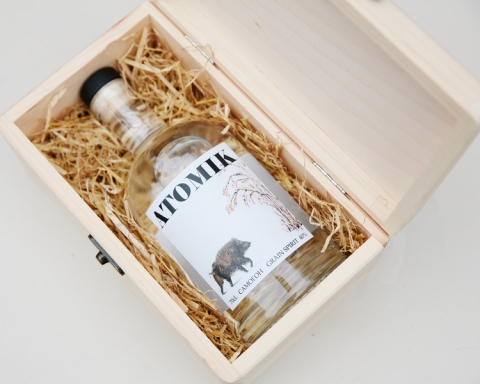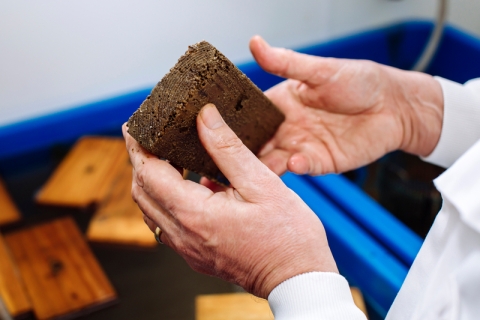Our submission for Earth Systems and Environmental Sciences comprised 33.8 full-time equivalent staff, an increase of over a third from REF 2014.
We have grown our income from £2.73 million to £4.04 million and our PhD completions by 20%. This has been achieved through sustained and significant investment in research staff, students and infrastructure. Our facilities, in particular, have benefitted from investment of £2.3 million from internal and external funding.
Results in REF 2021
- 82% of our overall research quality was rated as world-leading or internationally excellent in terms of originality, significance and rigour.
- 100% of our impact case studies were rated as outstanding or very considerable in terms of their reach and significance.
- 78.8% of our research outputs were rated as world-leading or internationally excellent in terms of originality, significance and rigour.
Research areas
Our research takes place across six research groups and contributes substantially to the University’s Sustainability and the Environment research theme, which has strong civic, national and international impact.
Crustal Evolution has an international reputation for discovery science, focused on the initiation of plate tectonics, geochronology of shock metamorphism, crustal evolution of the Moon and Mars, ore formation and geochronology of ductile and brittle deformation.
Environmental Processes and Impacts draws together expertise in aquatic geochemistry, hydrogeology, environmental radioactivity and environmental microbiology to address issues related to the impacts of climate change, contamination and pollution of the environment.
Palaeontology uses fossil and sedimentological records to investigate past climates and environments. It has built a reputation for research on vertebrate and invertebrate palaeontology, alongside micropalaeontology and ichnology. As well as having a high profile for science communication, the group’s stratigraphic expertise supports the hydrocarbon industry to improve source rock characterisation.
Marine Sciences focuses on marine biology and ecology, marine biogeochemistry, aquatic toxicology, climate change, marine protected areas, habitat restoration, and human impacts on the marine environment.
Natural Hazards focuses on volcano-seismology and associated hazards and risks, neotectonics, landslides, disaster risk reduction and resilience, and has a particular strength in the use of low-cost geoinformatics in responding to, and preparing for, hazardous events.
Ecology and Evolution undertakes fundamental research that underpins practical measures to understand biodiversity and ecosystem function, for example, the effect of climate change on terrestrial pollination stability, social evolution, community ecology, and host-parasite and plant-pollinator interactions.
Impact case studies
We submitted three significant impact case studies demonstrating the breadth of our activities across the following areas:

Development of Chemcatcher® - a passive sampler to improve environmental risk assessment and management of river catchments
We have delivered a step-change improvement in water quality information by developing a passive sampler. This has been used by environment agencies, water companies and water conservation trusts in the UK and Ireland. This has led to the implementation of environmental management strategies that have reduced pesticide usage, improved water quality, reduced water treatment costs and supported enforcement of environmental legislation. Licensing of Chemcatcher® has generated new international markets, generated commercial income and created jobs.

Changing perceptions and policy to better manage radioactively contaminated land at Chernobyl
Our research on radioactively contaminated lands in Ukraine led to two key policy changes in the management of the Chernobyl Exclusion Zone (CEZ) and the Compulsory Relocation Zone (combined area 4,600km2). This resulted in a major change in the strategy for managing surface waters in the CEZ and the signing of an agreement to begin the legal process of re-zoning four settlements and surrounding land. It also led to the development of ATOMIK spirits, the first consumer product from Chernobyl, now in production.

Driving innovation in sustainable wood protection
Marine wood borers cause huge economic losses by damaging maritime structures. Our expertise and innovative laboratory methods have been used in commercial product development and process optimisation to deliver new wood protection treatments and inform treatment design. This has opened new markets and improved the profitability and commercial competitiveness of international wood treatment companies. The methods are being incorporated into the European standard for the testing of wood and wood protection treatments.
Collaborations and partnerships
- BBSRC Sustainable Bioenergy Centre
- NERC Transfer Exposure Effects (TREE) consortium
- STFC UoP2 Mars Consortium
- UKRI Caribbean Resilience and Recovery Knowledge Network
- National Biofilms Innovation Centre
- UK & Ireland Native Oyster Network
- EPI Ltd
- DustscanAQ
- Various other industry partners
Facilities and resources
- Centre for Enzyme Innovation
- Institute of Marine Sciences
- Electron Microscopy and Microanalysis Unit
- Laser Ablation ICP-MS and MC-ICPMS Laboratory
- Rock Mechanics Laboratory
- Environmental Chemistry Analysis Laboratory
- Remote and Hyperspectral Sensing Laboratory
- Palaeontology and Advanced Microscopy Laboratories
- Zeiss Global Lab for 3D X-ray Microscopy
